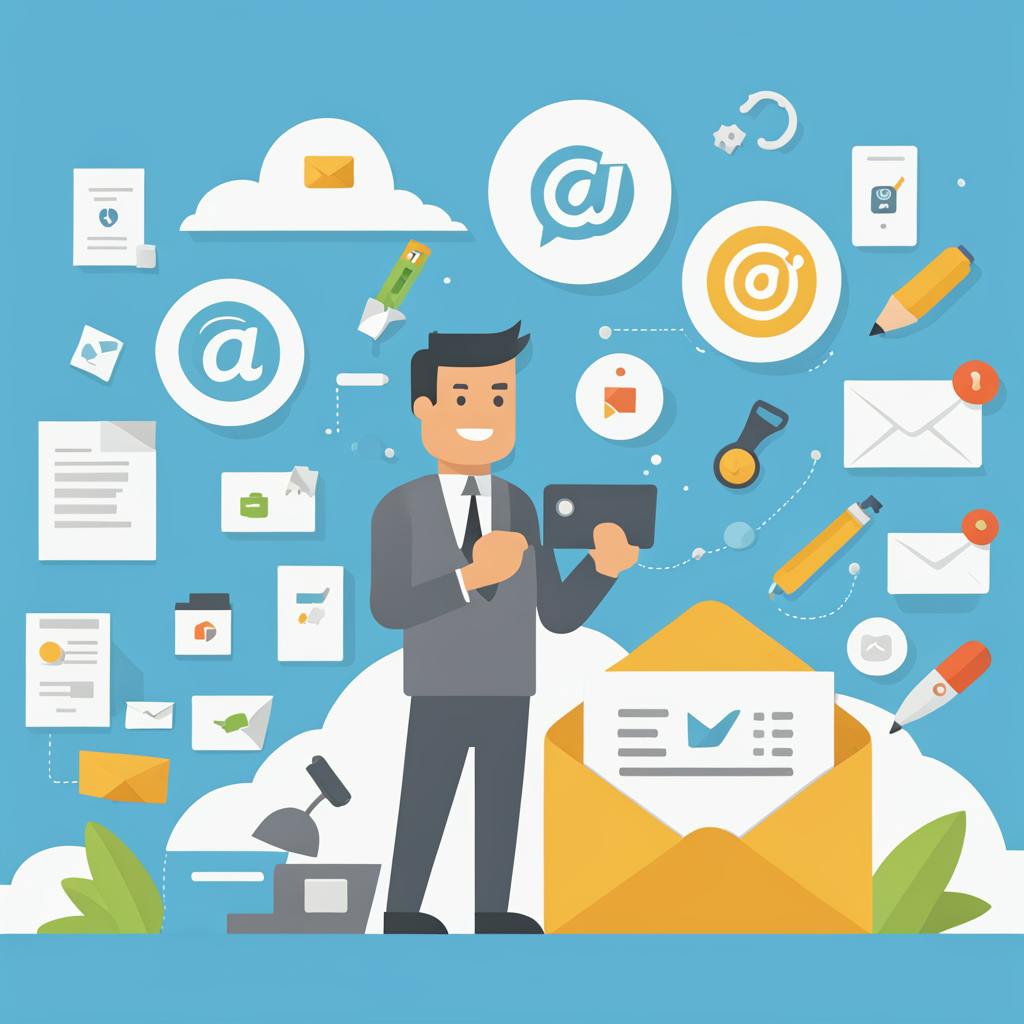In today’s fast-changing digital world, maximizing productivity and efficiency is key for both small businesses and large companies. One simple way to do this is by using email automation tools. These tools help run marketing campaigns, keep in touch with customers, and hold your audience’s attention. With the right "email automation solutions," you can save time, do more each day, and grow your business.
Understanding the Importance of Email Automation Tools
Email automation tools help you send the right message at the right time—without doing everything by hand. They can send newsletters, follow-up emails, special offers, and messages based on what your users do. This saves time and lets your team focus on bigger goals. No matter the size of your business, using the best email automation tools can improve your email marketing and boost productivity.
Key Benefits of Email Automation Tools
- Saves time
Email automation tools handle tasks like welcome emails, confirmations, and follow-ups. This frees up your time for more important work. - Adds personalization
You can send messages based on what your audience does and likes. This makes your emails feel more personal and relevant. - Keeps messages consistent
Automated emails go out on time, every time. This helps you stay connected with your audience. - Provides useful data
These tools track open rates, clicks, and conversions. You can see what works and make better choices. - Grows with your business
Whether you're small or large, email automation tools help you reach more people without extra effort.
Best Practices for Maximizing Productivity with Email Automation Tools
- Segment your audience
Group your email list by things like purchase history, interests, or age. This helps send the right message to the right people. - Write clear, helpful content
Good content makes your emails more useful. Use related keywords like best content marketing tools and email marketing tools for small businesses to stay relevant. - Set clear goals
Know what you want each email to do—whether that’s more sales, stronger branding, or better customer engagement. - Run A/B tests often
Test different subject lines, messages, and buttons to see what works best. Use these results to improve future emails. - Track performance
Use email automation tools to check open rates, clicks, and sales. These numbers help you improve your next campaigns.
Top Email Automation Tools for Businesses
There are many email automation tools that help with different business needs. Tools like Mailchimp, HubSpot, ActiveCampaign, and SendinBlue offer features like email scheduling and marketing automation. Each one makes it easier to reach your goals and stay within budget.
Why Email Automation Tools Matter for Small Businesses
Small businesses can use email automation tools to run marketing campaigns without a large team. These tools save time, boost customer engagement, and help turn leads into sales. With less manual work, small teams can still send strong, effective emails.
Connecting Email Automation Tools with Other Platforms
Most email automation tools connect with other systems, like CRMs, online stores, and social media. These connections help you run smoother campaigns and keep your message clear across all channels.

AI made with Stephanie Jagiello
FAQ on Email Automation Tools
Why use email automation tools?
Email automation tools help you save time and improve your email marketing. They let you send messages like welcome emails, promotions, and updates without doing it all manually. This helps businesses stay organized, connect with customers, and grow faster.
What are some top-rated email automation tools?
There are many great tools available. Here are a few that stand out:
- Mailchimp
Offers easy campaign building, ready-made templates, and strong reporting tools.
Best for: Small to medium businesses and online stores. - ActiveCampaign
Includes customer tracking and smart email flows.
Best for: Businesses that want powerful automation with CRM features. - SendinBlue
Combines email and SMS marketing. It's simple and affordable.
Best for: Companies that want a cost-effective, flexible solution. - Drip
Built for online stores. Sends emails based on customer actions and buying behavior.
Best for: E-commerce businesses. - GetResponse
Provides tools for email, landing pages, and webinars.
Best for: Small businesses that want an all-in-one marketing platform. - ConvertKit
Offers an easy visual email builder and tags for subscribers.
Best for: Creators, bloggers, and solo business owners.

AI made with Stephanie Jagiello
How can email automation tools boost productivity?
- Automated workflows: Set up welcome emails, sales messages, and drip campaigns once—they run on their own.
- Pre-designed templates: Use built-in templates to create emails faster without starting from scratch.
- Audience segmentation: Group contacts by interests or behavior to send more targeted emails.
- Personalization: Add names or user-specific content to improve open and click rates.
- Real-time tracking: Monitor performance and test different versions (like subject lines) to improve results.
- Consistent communication: Stay in touch with customers automatically and on schedule.
What are the main benefits of email automation tools for businesses?
- Increased revenue: Automated follow-ups and personal messaging help drive more sales.
- Scalability: Easily manage large lists and complex email campaigns as your business grows.
- Better customer experience: Send relevant, on-brand emails at the right time.
- Cost savings: Reduce manual work and lower the need for a large team.
- Fewer errors: Automation helps avoid common mistakes in email sending.
- Smarter decisions: Use analytics to understand what works and refine your strategy.
What are best practices for using email automation tools?
- Keep your list clean: Remove inactive users and keep contact info updated.
- Segment your audience: Use behavior, location, or interests to send more relevant content.
- Personalize your emails: Include names and recommend content or products users care about.
- Test often: Try different subject lines, layouts, and send times. Adjust based on results.
- Create valuable content: Every email should offer something useful, with a clear call to action.
- Track your results: Monitor open rates, clicks, and unsubscribes. Use insights to keep improving.
Conclusion
Email automation tools are no longer a luxury—they’re a necessity for businesses looking to grow smarter and faster. These tools help you save time, connect with the right audience, and make data-backed decisions—especially when combined with smart sales automation tools that streamline lead nurturing and conversions.
By following best practices like segmenting your audience, creating value-driven content, and tracking performance, you can turn your email marketing into a powerful engine for growth. Whether you’re a small business or a large enterprise, using email automation tools is one of the most effective ways to boost productivity and drive better results.
Start automating today and let your email marketing work harder—so you don’t have to.

